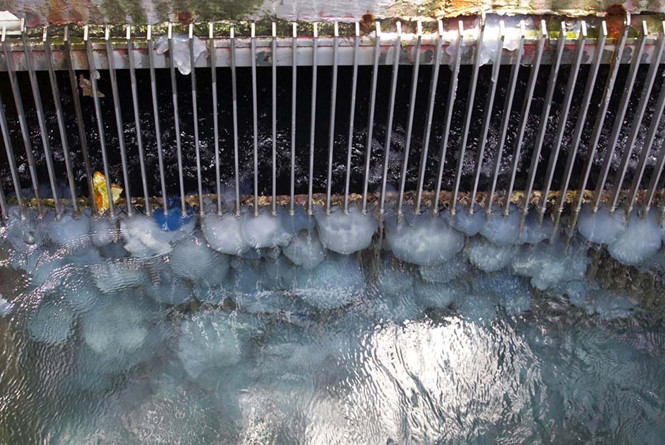Nuclear power plants worry about being attacked by jellyfish
British researchers have devised a predictive tool that can protect power plants built on the coast from the risk of attack from jellyfish.
A sudden "population" explosion of jellyfish can cause serious problems for power plants located along the coast. They clog the cooling water valve, forcing the plant to reduce productivity or even suspend operations.
In recent years, jellyfish related disasters have many times threatened global nuclear power plants. For example, the Torness nuclear power plant in Scotland had to shut down for the whole week after many " jellyfish " teams flooded the coast in 2011. The same situation happened for nuclear and coal power plants. Swedish, American and Japanese stones.
Israeli power stations did not escape, and the Philippines suffered a large power outage in 1999 until the cleanup of jellyfish could fill 50 trucks. Furthermore, the nuclear carrier USS Ronald Reagan was disabled after the ship's nuclear reactor cooling system filled with jellyfish while US aircraft carriers were visiting Australia in 2006.

Jellyfish stuck to the cooling water valve of a power plant.(Photo: AFP).
Despite the lack of historical records, many people still believe that an increase in the population of jellyfish is likely due to a change in global climate towards warming. "They can multiply quickly," The Guardian quoted expert Erica Hendy of Bristol University, who is working with EDF Energy Group (USA) - managing the Torness Plant, to find how to solve the situation.
The project will use a supercomputer to model the movement of ocean currents affecting jellyfish movements across all seas and oceans, as well as changes that will take place throughout the year. This is because the jellyfish's swimming capacity is limited, and they are completely dependent on the flow of water pushing back and forth in the seabed. In addition, the model still works, moving up and down in the jellyfish's water, how it avoids the danger on the ocean surface during the stormy period, and the ability to float varies with age. work.
Based on the data on recent attacks, the researchers will trace back to hot spots, where the jellyfish community flourishes, before placing observation devices to detect the early explosion of the dial. their quantity. EDF began to study whether satellite or unmanned images should be used for these warning activities. When the mollusk community finds a way to skyrocket, the new system will calculate to predict the location as well as when it is expected to hit the shore, and deploy a plan to salvage the jellyfish elsewhere.
- Jellyfish species can 'knock down' American carriers
- Jellyfish threaten nuclear power plants
- Jellyfish makes the nuclear plant shut down
- Potential threat from old nuclear plants
- Vietnam nuclear power needs to have standards
- The first floating nuclear power plant will operate in 2016
- Iran-Russia agreed to build 2 more nuclear power plants
- Nuclear power plant floating on water
- Germany closed all nuclear power plants by 2022
- Vietnam was back in time to build the first nuclear power
- Situation of world nuclear technology
- Russia tested floating nuclear power plant
 Animal 'suffering' after hibernation
Animal 'suffering' after hibernation Why do goats climb well?
Why do goats climb well? Scientists were surprised to see chimpanzees eating turtles
Scientists were surprised to see chimpanzees eating turtles Giant catfish died deadly due to drought in Thailand
Giant catfish died deadly due to drought in Thailand